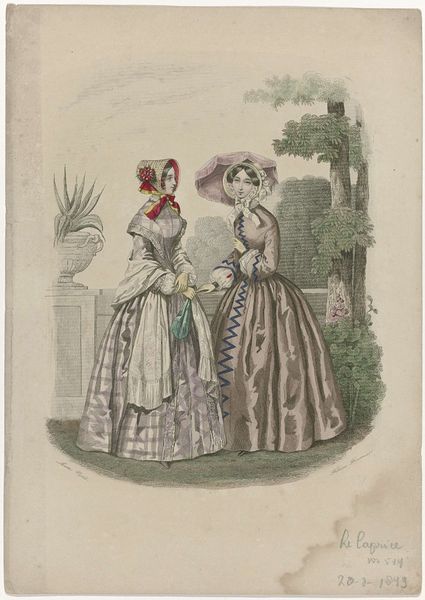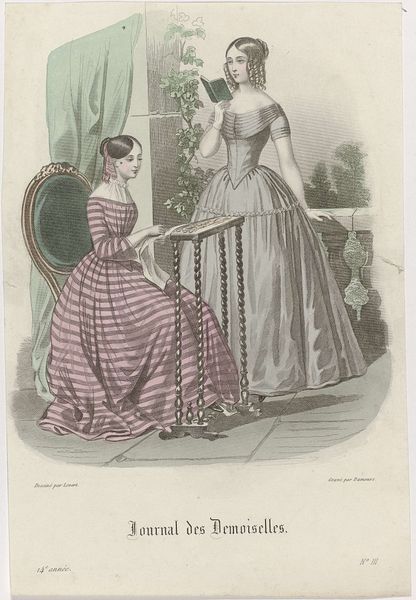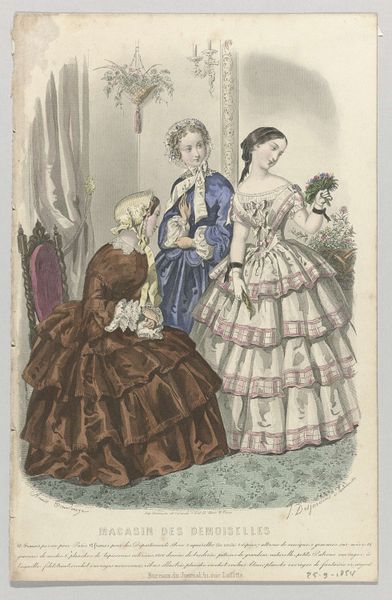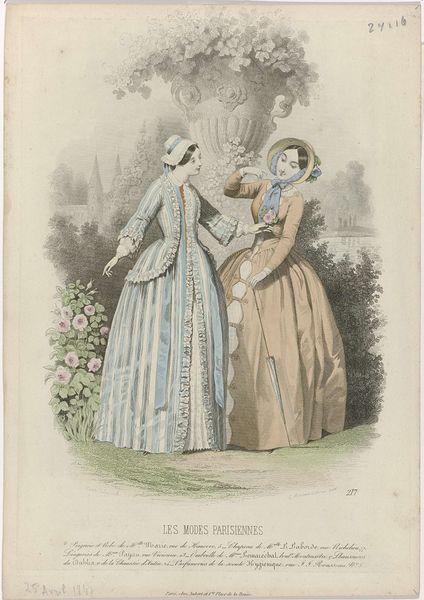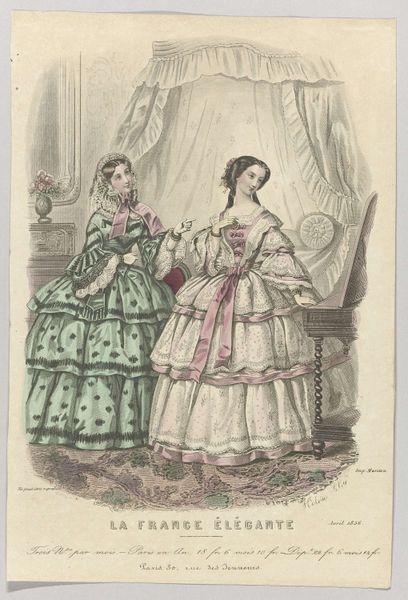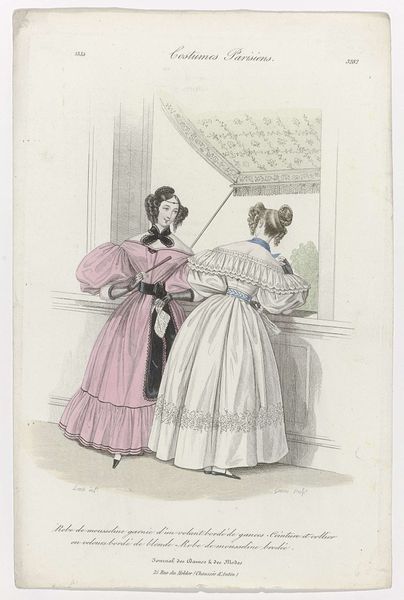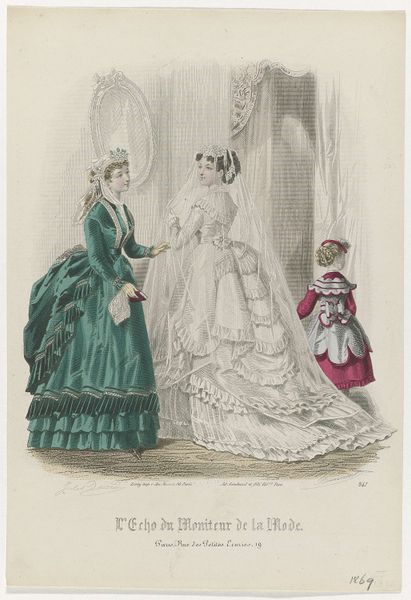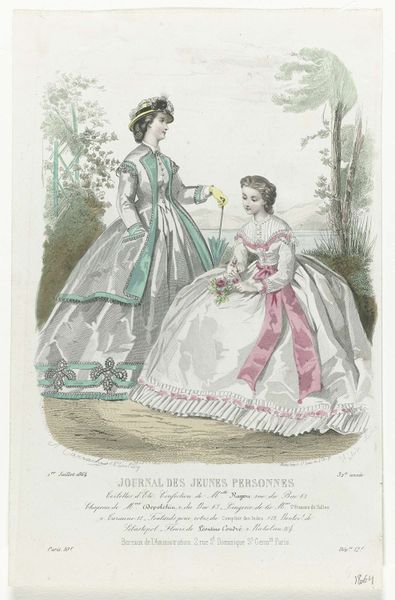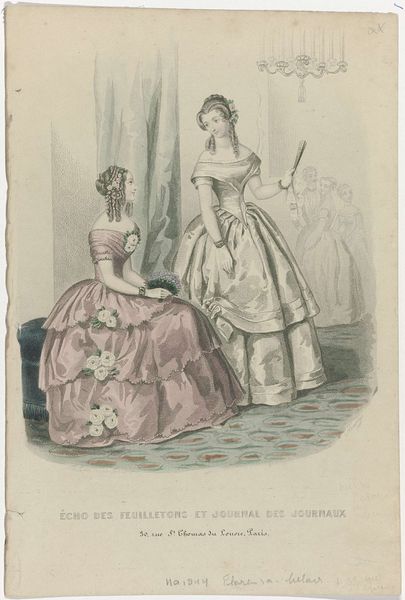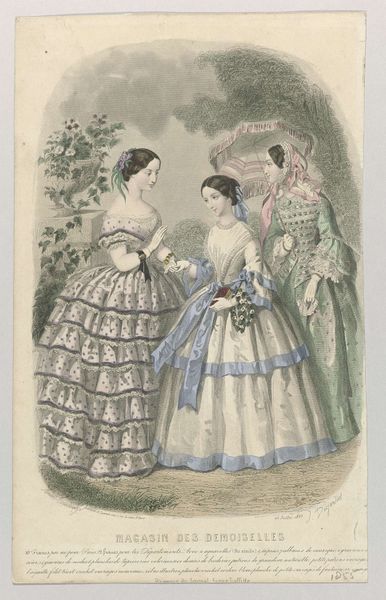
Les Modes Parisiennes, 1852, No. 469 : Coiffure de Melle Romain (...) 1852
0:00
0:00
Dimensions: height 270 mm, width 196 mm
Copyright: Rijks Museum: Open Domain
Editor: Here we have "Les Modes Parisiennes, 1852, No. 469," a print made with lithography and etching techniques. I find the composition so intriguing—almost staged. What draws your eye as you look at this piece? Curator: The immediate impact lies in the meticulous detail and symmetry within its confined space. Note the interplay of lines: the verticality of the figures countered by the horizontality of the layered skirt. It’s not just a representation of fashion, but a carefully constructed visual architecture. Consider, too, the textural contrast: the smoothness of the skin against the complex layering of fabric. What visual cues create depth, in your opinion? Editor: I see how the darker shading around the edges makes the figures stand out. And I like the subtle differences in patterns to help distinguish between foreground and background elements. Do you see symbolism in their gestures, the vase? Curator: The vase is inconsequential as its symbolism plays less of a role here compared to its construction within the tableau. Consider its color relative to the skin tones of the figures—how does that guide our eye? Editor: That's a good point. Focusing on its form makes it blend, not stand out. So, you’re saying the real artistry is not about hidden meaning but about the overall visual experience? Curator: Precisely. How the forms interact, the balance of light and shadow, the textural contrasts – these are the building blocks of the aesthetic experience here. These elements aren't arbitrary but purposefully orchestrated to evoke a sense of refined elegance. Editor: That reframes how I see it entirely. Thanks. I’ll pay closer attention to those visual cues now. Curator: Indeed, observing line and form is key. Now you might discover subtleties unseen until this moment.
Comments
No comments
Be the first to comment and join the conversation on the ultimate creative platform.
